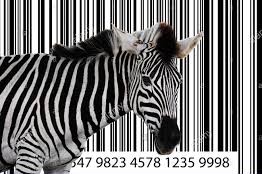Who Issues UPC Barcodes?
By The Barcode Guru
There are a lot of misconceptions out in the world about where exactly barcodes come from. Originally, when the barcode process was first created in the 1960s, businesses would just make up their own numbers and put them on their products. This worked for a long time for managing inventory but eventually as barcode usage became more widespread, problems arose. Suddenly, stores found themselves with multiple different products all using the same exact barcode number - which defeated the whole purpose of barcodes in the first place!
It was this problem that caused the heads of several large grocery store chains to get together to come up with a solution. They decided that there needed to be a uniform numbering system for barcodes. Hence, the Uniform Code Council (aka UCC) was born.
The UCC (now known as GS1) decided that a simple 12-digit numbering system was best for all products and they came up with a standardized barcode font. They called this font the UPC Universal Product Code) and embedded it with an algorithm to make sure all UPC barcodes maintained the exact same format. They also determined that all UPC numbers needed to originate from a single database. This way they would know what numbers had or hadn’t been used to help prevent UPC number conflicts.
The trick now was to convince the entire world to use their new standardized UPC barcode system and that GS1 should manage that single database source of all UPC barcodes. Fortunately, because the retailers who invented the system were so powerful and persuasive, the system soon caught on and spread rapidly throughout the world.
A fun point of trivia is that the very first UPC barcode ever used was on a pack of Wrigley’s chewing gum!
Today, all barcodes still originate from GS1. Unfortunately, some people (including some unethical barcode re-sellers) continue to try and make up numbers out of thin air to be used on products but inevitably these people run into serious problems from retailers. This causes a great deal of expense and headache for the manufacturers because they will have to re-do all of their product packaging. Some retailers, such as Amazon.com, may even ban your product if it is found to have a fraudulent barcode on it and many large retailers issue steep fines.
An easy way to tell if a barcode re-seller is legit or not is to look at their pricing. If they are selling barcodes for dirt cheap prices and in huge quantities it almost guaranteed they are just making up the UPC barcode numbers out of thin air and selling them (regardless of what they may say!)
If you have a product and you need a UPC barcode for that product, you will have to either purchase your barcode directly from GS1 or buy it from a legitimate re-seller of barcodes who purchased their barcode supply directly from GS1. As far as reputation is concerned, the two most trusted re-sellers of UPC barcodes are TheBarcodeRegistry.com and their partner Buyabarcode.com. These companies have been featured in both the Wall Street Journal and the Washington Post and have been in business for more than 20 years. They are also the only re-sellers of barcodes whose UPC barcodes will work for every aspect of the Amazon listing process – including Brand Regstry.
Hope you found this article on “Who Issues UPC Barcodes?” helpful!







